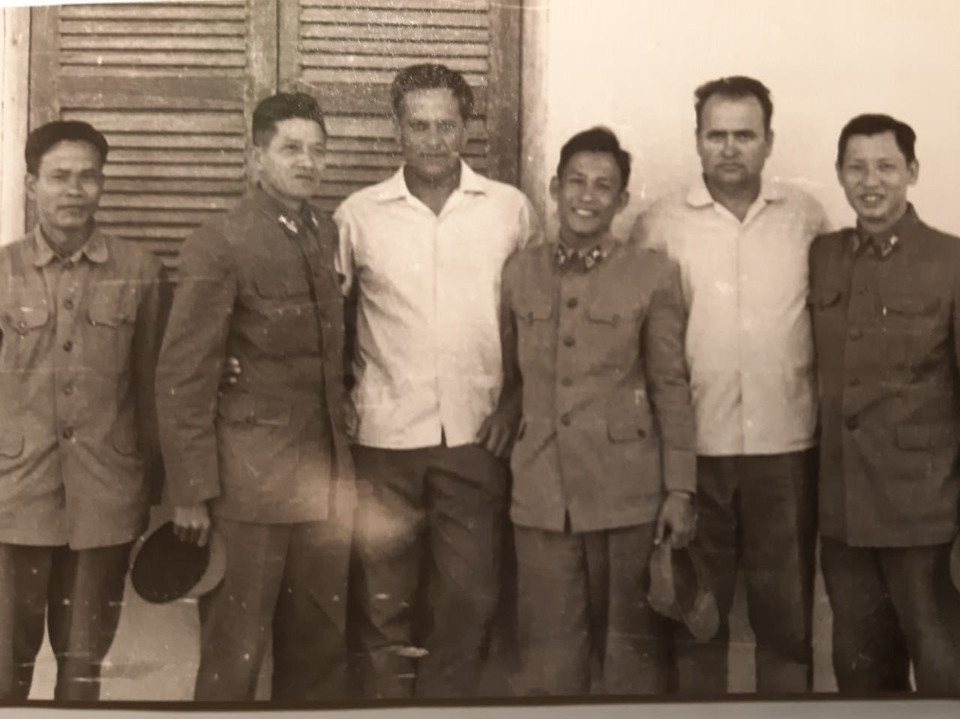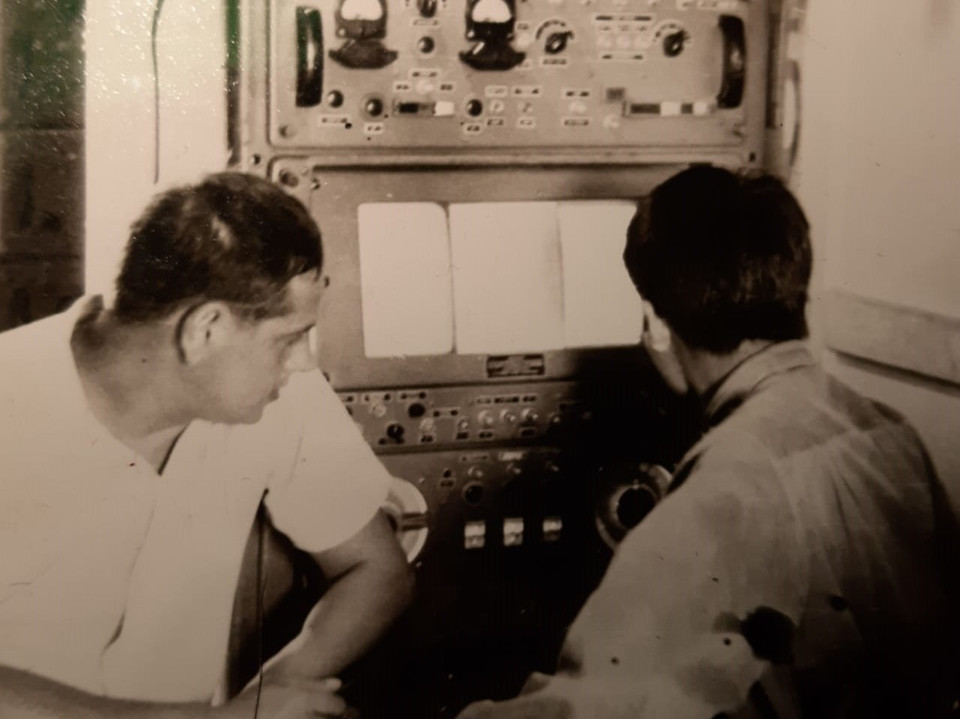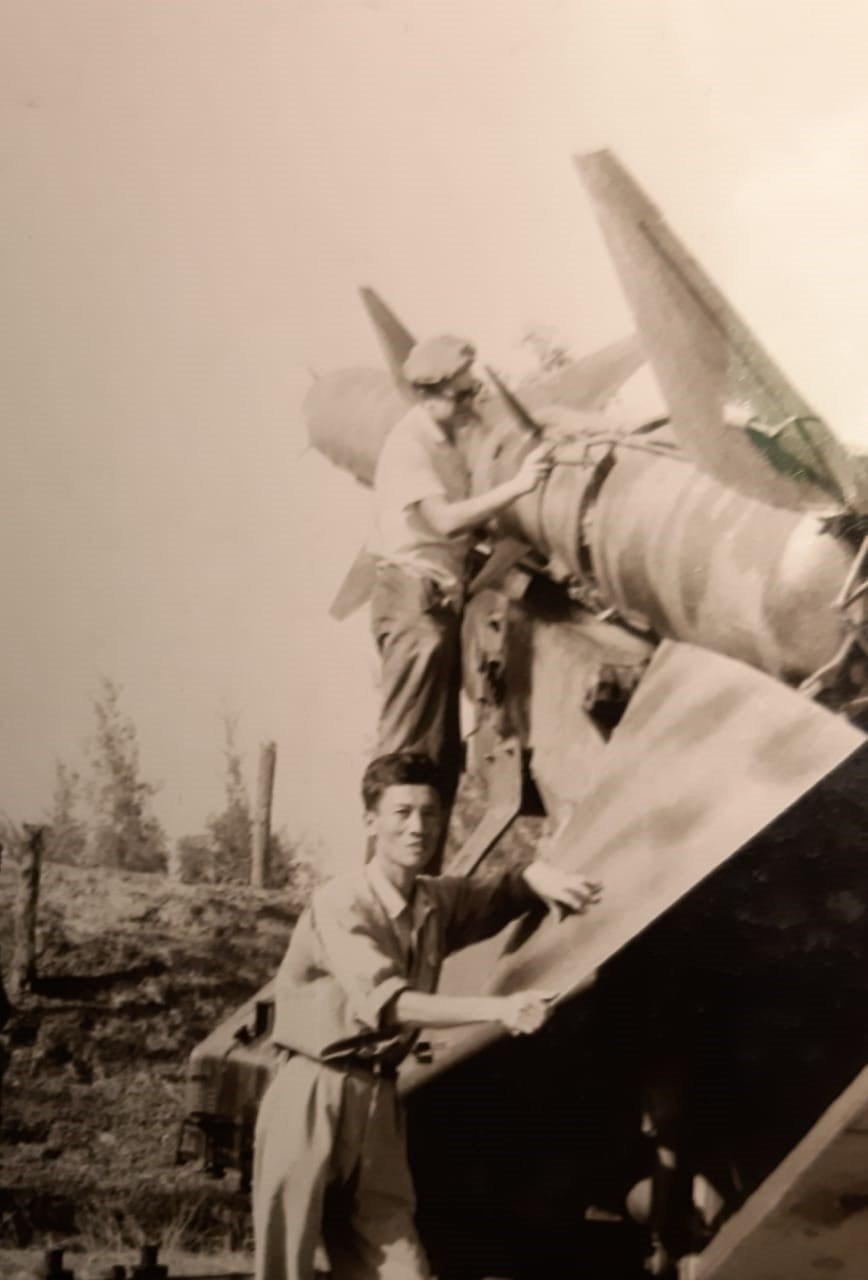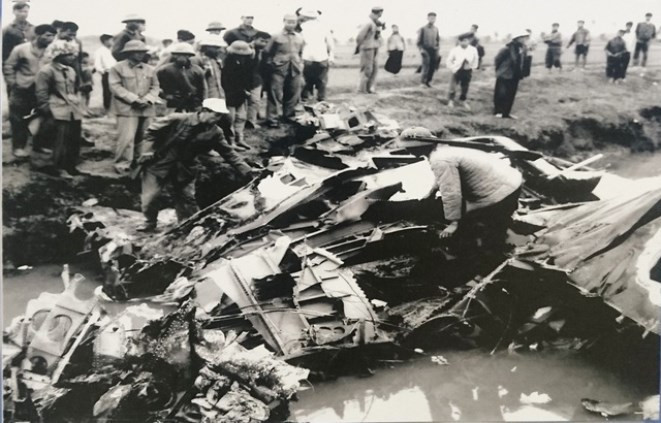On the occasion of the 50th anniversary of Vietnam’s reunification, VietNamNet presents a series titled “April 30 - A New Era,” featuring insights from historians, military experts, and witnesses to history.
The series highlights lessons in unity, international support, military strategy, and diplomacy that shaped Vietnam’s victory in its resistance war against the United States. These experiences offer valuable insights for national defense and development in the modern era.
This article by Major and M.A. Le Minh Nam honors the contributions of Soviet military experts who assisted Vietnam during its resistance war against the United States.

Colonel Anatoly Nazarov, Vice Chairman of the St. Petersburg Chapter of the Russian Vietnam War Veterans Association (MOOVVV), poses with Vietnamese officers. Photo: VNA
In July 1965, the Soviet government established a military expert delegation to support the Vietnam People's Army, focusing on air defense and air force operations.
Responding to the Vietnamese government’s diplomatic efforts, the Soviet Union supplied critical air defense weapons and deployed military experts to train Vietnamese personnel. In the initial phase, these experts not only trained troops but also participated directly in combat.
On July 24, 1965, under the supervision of Vietnamese air defense units, a Soviet combat crew used a SAM-2 missile system to shoot down a U.S. F-4C aircraft. This marked the beginning of Vietnam’s mastery of the SAM-2 system and led to independent operations. By May 1966, 2,266 Soviet experts had trained ten Vietnamese surface-to-air missile regiments.
As Vietnam’s air defense capability grew, the U.S. military adapted by disrupting missile systems, causing many to self-destruct or lose guidance. In late 1966, the USSR sent three expert teams specializing in missile science, defense industry, and electronic warfare to help Vietnam counter these tactics.

Colonel Anatoly Nazarov in a missile control cabin. Photo: VNA
With Soviet support, Vietnamese air defense forces improved both technically and tactically. On September 17, 1967, they shot down their first B-52 bomber in North Vietnam.
Beyond training and combat, Soviet experts were responsible for assembling, maintaining, and testing air defense systems. They guided Vietnamese soldiers on refueling procedures, missile assembly, vehicle operation, and electronic calibration.
Together with Vietnamese officers, the Soviet delegation developed instructional materials and technical manuals in radio electronics and missile maintenance. Between 1965 and 1972, they conducted four major upgrades to the SAM-2 systems, implementing 40 technical modifications to counter U.S. aerial tactics.
By late 1972, Vietnamese forces - drawing on this technical expertise and their own resilience - shot down 36 U.S. aircraft in a single campaign, including 29 B-52s, 16 of which crashed immediately. This achievement, part of the legendary “Dien Bien Phu in the air” campaign, forced the U.S. to abandon its strategic bombing and engage in peace negotiations.
Once Vietnam’s air defense units achieved operational independence, the Soviet military presence was gradually reduced.
In aviation, Soviet experts helped Vietnam master air combat operations, train pilots, and maintain fighter and transport aircraft. Many Vietnamese pilots had received basic training in the USSR or China but lacked combat experience. Soviet advisors upgraded their skills, guiding MiG-17 pilots and training them to fly MiG-21 jets under the “follow me” principle.

Soviet expert on a missile launch platform. Photo: VNA
Soviet experts also performed test flights, helped develop Vietnamese curricula in air combat, and authored combat instruction manuals. These efforts improved the effectiveness of both pilots and commanders.
With guidance from the USSR, Vietnamese air forces developed the “semi-intercept” tactic for MiG-21 fighters: strike quickly, go deep, attack in coordination, and retreat rapidly. Between February 7, 1965, and November 1, 1968, Vietnamese pilots launched 4,602 sorties, fought 251 engagements, and shot down 218 U.S. aircraft.
This contributed significantly to the success of the 1968 Tet Offensive and ultimately forced the U.S. to halt bombings north of the 20th parallel.
During the bombing pause, Vietnam rebuilt its air force and focused on its goal of shooting down a B-52 bomber. On November 20, 1971, pilot Vu Dinh Rang fired two missiles at a B-52, damaging it and reinforcing Vietnam’s resolve.
The Soviet government responded to Vietnam’s renewed request for support by pledging to send “any expert, of any level, in any number.” Despite dangers, Soviet specialists continued their mission. In 1972 alone, they logged 3,850 missions and 1,265 flight hours, training pilots in night flying and aircraft transitions.
On December 27, 1972, MiG-21 pilot Pham Tuan shot down a U.S. B-52, marking the first time in history this “flying fortress” had been defeated in air-to-air combat. This victory helped bring about the signing of the Paris Peace Accords on January 27, 1973.

From 1973 onward, the number of Soviet experts declined. By late 1974, the Soviet military mission transitioned to an advisory role, focusing on technical manuals and training documents for air defense and air force operations.
The Soviet military mission was a result of sustained diplomatic efforts by the Democratic Republic of Vietnam and President Ho Chi Minh to secure international support for national liberation and unity.
According to the Soviet General Staff, between July 11, 1965, and December 31, 1974, over 6,359 Soviet officers and generals and 4,500 enlisted personnel served in Vietnam. Thirteen died in combat, and three succumbed to illness during their service.
Despite the risks, Soviet experts were tireless in their dedication, helping Vietnam build an independent, sustainable air defense and air force capability. Over time, their roles evolved from direct support to full advisory and institutional development.
As one Soviet account put it: “By their combat service, the Soviet experts laid the groundwork for the diplomatic relationship between the Soviet Union and the Democratic Republic of Vietnam.”
In recognition of their service, the Vietnamese government awarded thousands of medals and honors to individual experts and Soviet military collectives.
Major Le Minh Nam